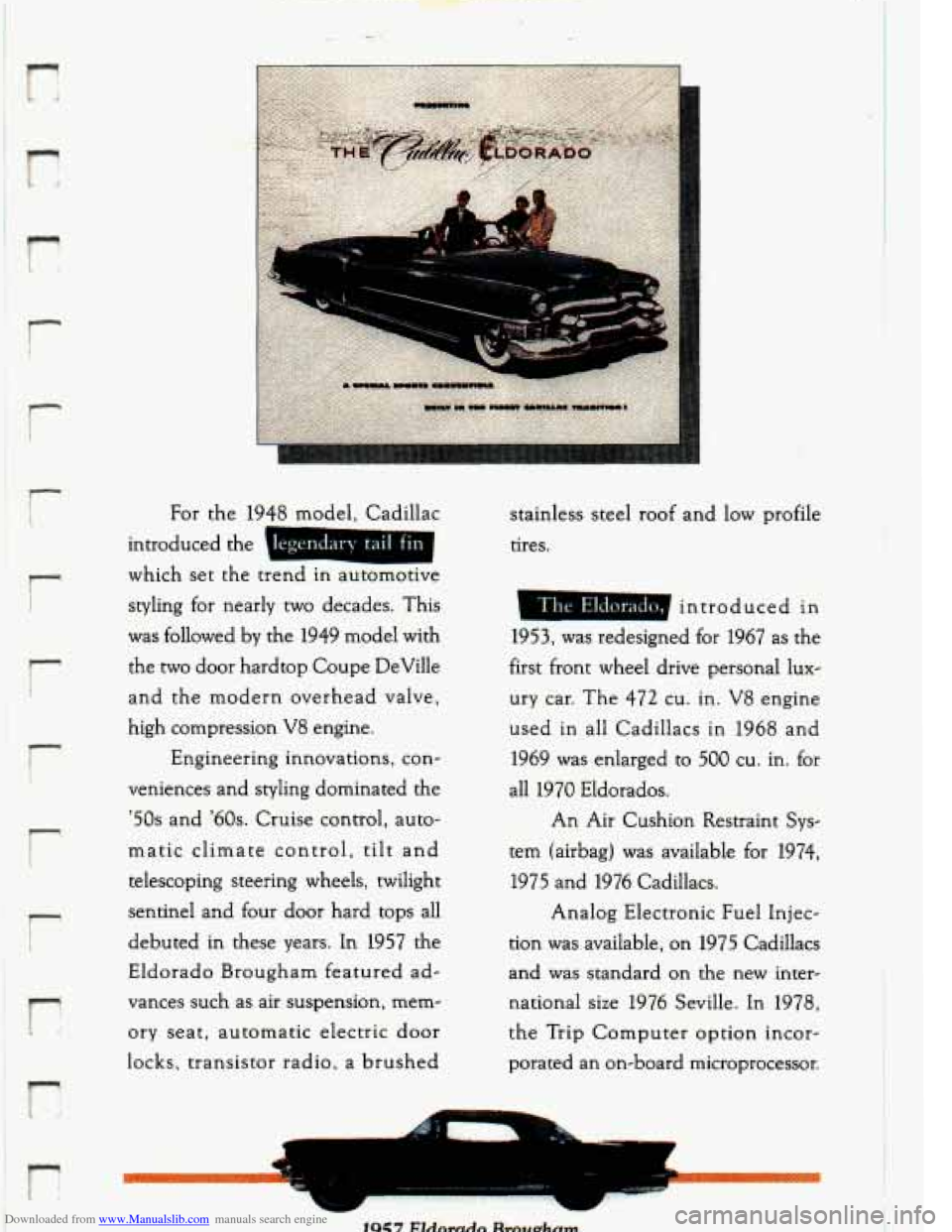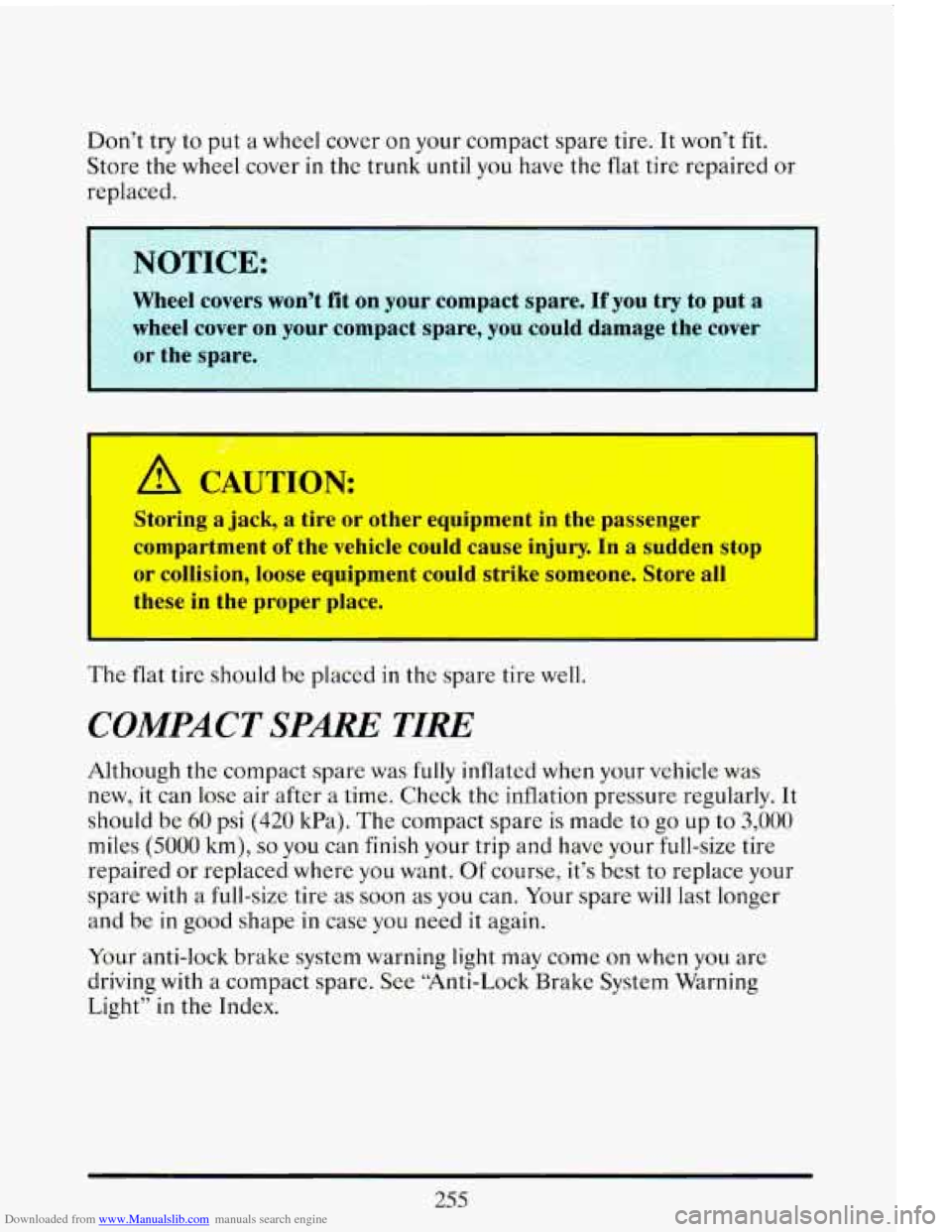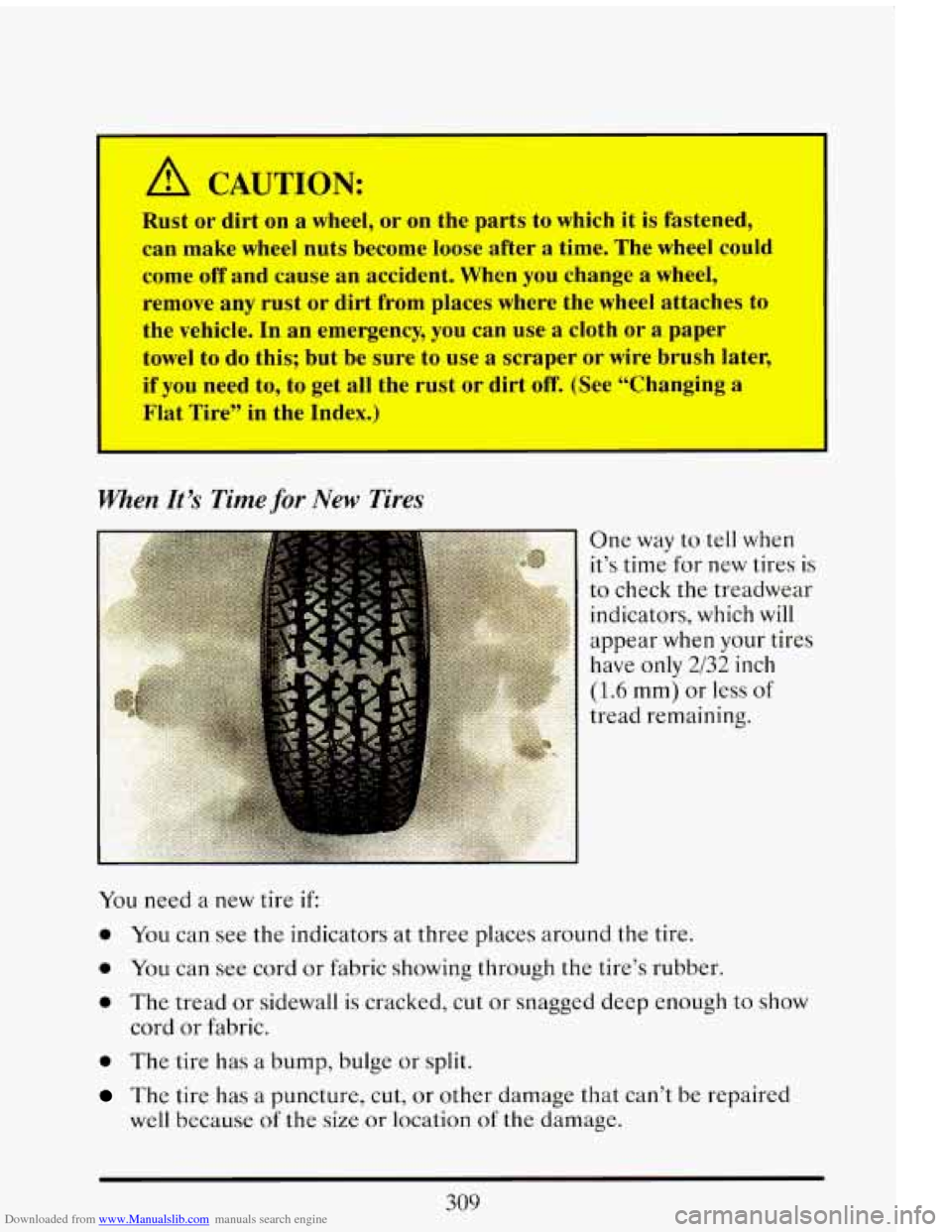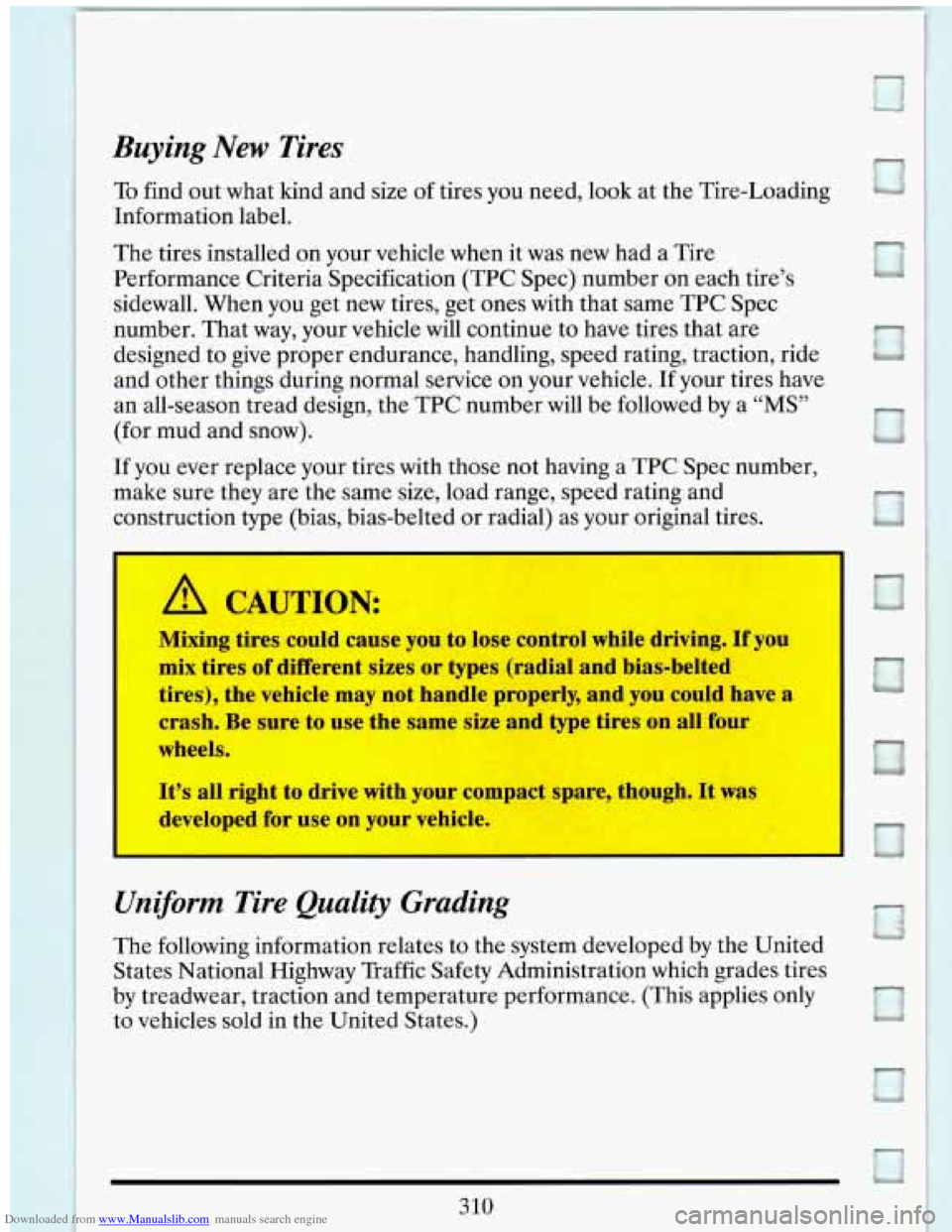wheel size CADILLAC ELDORADO 1993 10.G Owners Manual
[x] Cancel search | Manufacturer: CADILLAC, Model Year: 1993, Model line: ELDORADO, Model: CADILLAC ELDORADO 1993 10.GPages: 398, PDF Size: 20.66 MB
Page 9 of 398

Downloaded from www.Manualslib.com manuals search engine . .- 9 --r I I
r
r
P
-. . _.- , -. J. .-
For the 1948 model, Cadillac
introduced the legendary
tail fin
which set the trend in automotive
styling for nearly two decades. This
was followed
by the 1949 model with
the two door hardtop Coupe DeVille
and the modern overhead valve,
high compression
V8 engine.
-
Engineering innovations, con-
veniences and styling dominated the
'50s and '60s. Cruise control, auto-
matic climate control,
tilt and
telescoping steering wheels, twilight
sentinel and four door hard tops all
debuted in these years. In
1957 the
Eldorado Brougham featured ad-
vances such as air suspension, mem-
ory seat, automatic electric
door
locks, transistor radio, a brushed stainless steel roof
and low profile
tires.
introduced in
1953, was redesigned for 1967 as the
first front wheel drive personal lux- ury car. The
472 cu. in. V8 engine
used
in all Cadillacs in 1968 and
1969 was enlarged to 500 cu. in. for
all 1970 Eldorados.
An Air Cushion Restraint Sys-
tem (airbag) was available for
1974,
1975 and 1976 Cadillacs.
Analog Electronic Fuel Injec-
tion was available, on
1975 Cadillacs
and was standard on the new inter-
national size 1976 Seville. In 1978,
the Trip Computer option incor-
porated an on-board microprocessor.
Page 269 of 398

Downloaded from www.Manualslib.com manuals search engine Don’t try to put a wheel cover on your compact spare tire. It won’t fit.
Store
the wheel cover in the trunk until you have the flat tire repaired or
replaced.
NOTICE:
Wheel covers won’t fit on your compact spare. you try to put I
wheel cover on your compact spare, yo11 Pwld damage the cover
1,- the spare.
A CAUTION:
I-
z ..
Storing a jack, a tire or other equipment in the passenger
compartment
of the vehicle could cause injury. In a sudden stop
or collision, loose equipment could strike someone. Store
all
the in the p per place. ~
The flat tire should be placed in the spare tire well.
COMPACT SPARE TIRE
Although the compact spare was fully inflated when your vehicle was
new,
it can lose air after a time. Check the inflation pressure regularly. It
should be 60 psi (420 kPa). The compact spare is made to go up to 3,000
miles (5000 km), so you can finish your trip and have your full-size tire
repaired or replaced where you want. Of course, it’s best
to replace your
spare
with a full-size tire as soon as you can. Your spare will last longer
and be
in good shape in case you need it again.
Your anti-lock brake system warning li.ght
may come on when you are
driving
with a compact spare. See “Anti-Lock Brake System Warning
Light” in the Index.
255
Page 323 of 398

Downloaded from www.Manualslib.com manuals search engine Rust or dirt on a wheel, or on the parts to which it is fastened,
can
make wheel nuts become loose afkr a time. The wheel could
come off and cause an accident. When you change a wheel,
remove any rust or dirt from places where the wheel attaches to
the vehicle. In an emergency, you can use a cloth or a paper
towel to do this; but be sure to use a scraper or wire brush later,
if you need lo, to get all the rust or dirt off. (See “Changing a
Flat Til .’I in the Index.)
When It% Time for New Tires
One way to tell when
it’s time for new tires is
to check the treadwear
indicators, which
will
appear when your tires
have only
2/32 inch
(1.6 mm) or less of
tread remaining.
You need a new tire if:
0 You can see the indicators at three places around the tire.
0 You can see cord or fabric showing through the tire’s rubber.
0 The tread or sidewall is cracked, cut or snagged deep enough to show
0 The tire has a bump, bulge or split.
cord
or fabric.
The tire has a puncture, cut, or other damage that can’t be repaired
well because
of the size or location of the damage.
309
Page 324 of 398

Downloaded from www.Manualslib.com manuals search engine Buying New Tires
To find out what kind and size of tires you need, look at the Tire-Loading
Information label.
The tires installed on your vehicle when it was new had a Tire
Performance Criteria Specification (TPC Spec) number on each tire’s
sidewall. When you
get new tires, get ones with that same TPC Spec
number. That way, your vehicle will continue to have tires that are
designed to give proper endurance, handling, speed rating, traction, ride
and other things during normal service on your vehicle. If your tires have
an all-season tread design, the TPC number will be followed by a
“MS”
(for mud and snow).
If you ever replace your tires with those not having a TPC Spec number,
make sure they are the same size, load range, speed rating and
construction type (bias, bias-belted or radial) as your original tires.
A CAUTION:
Mixing tires could cause you to lose control while driving. If you
mix tires of different sizes or types (radial and bias-belted
tires), the vehicle may not handle properly, and you could have
a
crash. Be sure to use the same size and type tires on all four
wheels.
It’s all right to drive with your compact spare, though. It was
developed
for use on your vehicle.
Uniform Tire Quality Grading
The following information relates to the system developed by the United
States National Highway Traffic Safety Administration which grades tires
by treadwear, traction and temperature performance. (This applies only
to vehicles sold in the United States.)